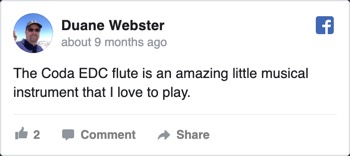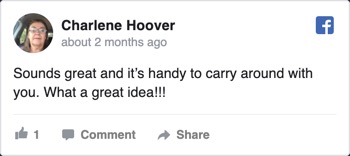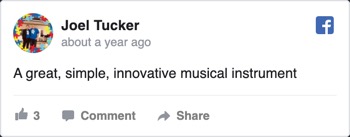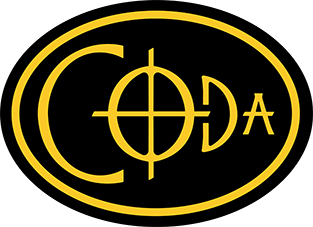Always On My Mind
On Coda EDC Flute
EDC stands for EveryDay Carry: ideally, an item compact, durable, & useful enough to keep on you
(Why an everyday carry flute? 'Cause if you ain't got it, you can't play it.)

"This Was What I Wanted All Along"
* Customer Todd Moody Shares How
His 45-Year Search Ended
With Coda
Our Story Begins in Cranston, Rhode Island…
“I started in music at age ten, when my parents rented an alto sax for me through the public school music program in Cranston, RI. The sax was my dad’s choice, because he played clarinet but always wished he had played sax. They had the money for the rent-to-own alto sax (I wish I still had that horn) but not for private lessons, so I just attended the weekly school group lessons, where we learned to read music and play together. After two years of that, I was in junior high school and never had any more actual instruction. But I did play in the band all the way through school, eventually playing bari sax in the marching band and tenor in the stage band.
The Frustration That Launched Todd’s Lifelong Search
Why the Recorder Couldn’t Satisfy Him
Maybe the Tin Whistle?
Aha, How About Ocarinas?
“Finally…”
It Sounded Unlike Anything Else
But Most Importantly…
A Surprising Benefit of Playing Coda
P.S. Why Coda is a Game-Changer…
* headings have been added to the review
Coda EDC Flutes
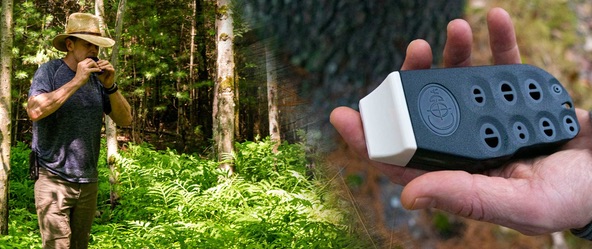

Coda EDC Flute
- $59.95
- Chromatic range: C5-C7
- If Coda seems expensive, here is some information behind the price: Click Here
- When you purchase 2 or more Codas, shipping is FREE to addresses in the USA
- View in our store
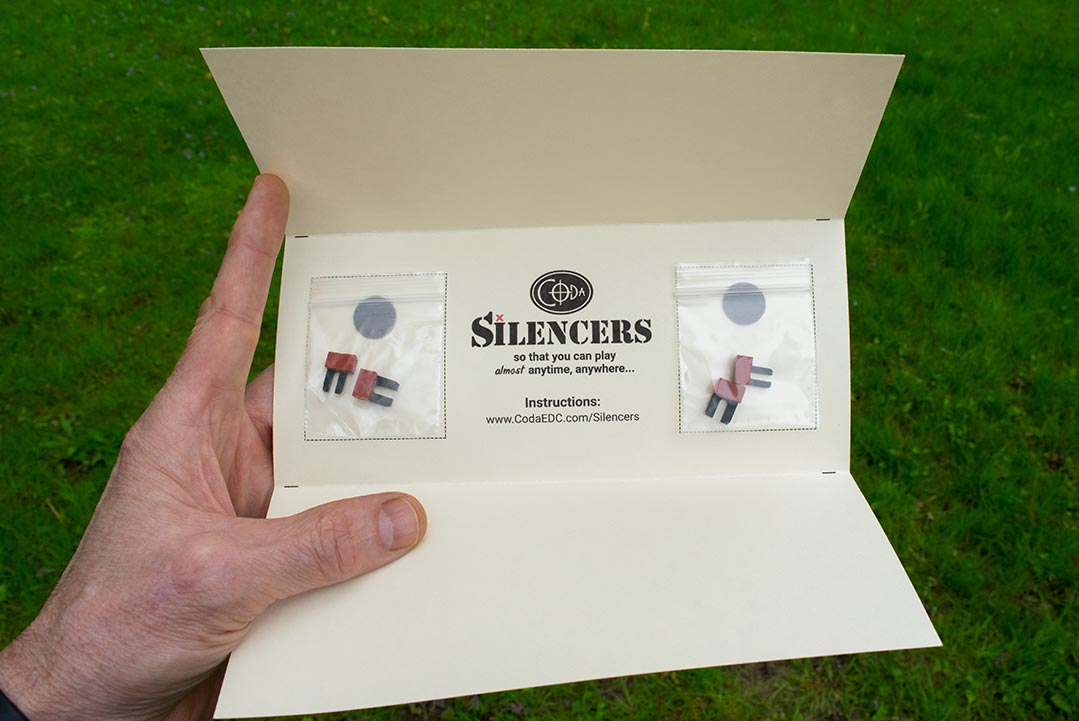
Coda Silencers
- $9.95
- If you want to practice quietly
- Includes TWO complete sets
- View in our store
Coda Basics
- TINY: Coda is only 5 inches long (12.7 cm), so you can bring it along with you. As a reference, Soprano recorders are usually about 12.5 to 13.25 inches long (31.7 to 33.7 cm).
- TOUGH: Coda is made from a resilient, food-safe polymer and is designed to be tough enough so you can bring it along without worrying about breaking it.
- LIGHT: At only 2.4 oz (or 2.6 oz with the Coda clip), Coda is so light that you forget you have it on you.
- GREAT SOUND: listen to recordings in the hear coda section below
- TWO CHROMATIC OCTAVES: Pitched in the key of C, Coda plays the notes B, C, D, E, F, G, A, B, C, D, E, F, G, A, B, C with all the sharps & flats in between. This gives you the range you need to play in different keys and to play a wide repertoire of music. Chromatic range: C5-C7
- INTUITIVE FINGERING: Coda’s patented Uni-Phi fingering system keeps fingering relatively intuitive while allowing a wide range of notes in such a small instrument. This makes it easier to improvise and to play challenging music. See fingering chart.
- MADE IN THE USA: We mold the components for our Coda EDC Flutes in the USA using a tough, precision-molding, food safe, medical-grade plastic. Right here in Connecticut, we carefully assemble them ourselves (using both adhesive and ultrasonic welding) and perform all our other secondary operations.
Included free with Coda
- Microfiber bag for Coda
- Coda playing tips
- Complete fingering charts, with several simple practice songs to get you started
- Extra business-card-size fingering charts for your wallet
- A 52-page book with scales and starter songs to learn Coda’s fingering pattern, as well as lots of beautiful songs for your repertoire.
- PLUS access to our extensive online Learning Resources, such as…
- Self-Learning Music Curriculum for beginners. No prior knowledge required.
- Note Naming Flashcards to help you learn the notes of the musical staff
- 59 Beautiful Christmas Carols — in several keys each, excellent for practicing sharps & flats
- And more…
For an overview of our online resources, check out our Tips for Newbies
